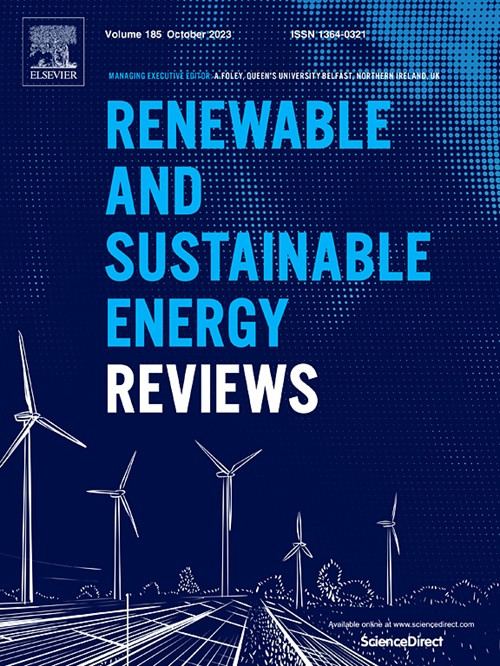Accommodating more electric vehicles in old residential communities by enabling distributed vehicle-to-grid dispatching and coordinated system operation
IF 16.3
1区 工程技术
Q1 ENERGY & FUELS
引用次数: 0
Abstract
Electric vehicles' (EVs') popularity in recent years not only reduces oil demands and gas emissions, but also effectively promotes the deployment of charging infrastructure. However, regarding old residential communities (ORCs), implementing widespread charging facilities may not be a wise choice due to scarce public areas, complex reconstruction, and significant costs. In this context, this paper proposes to utilize vehicle-to-grid (V2G) technology to support the shared DC fast charging for ORCs’ applications. Initially, the underlying reasons for difficult-to-charge issues in ORCs are unveiled and analyzed comprehensively. Then, a hierarchical management framework with operation strategies is designed based on a novel reconstructed charging station architecture. A new power electronic device called smart interlinking unit (SIU) is the critical component in this architecture. Then, an introduced distributed V2G dispatching strategy is to be executed by each local AC charger, considering the extra DC charging load and five typical charging scenarios. This paper also proposes a feeder coordination strategy, taking the efficiency feature of deployed transformers and power converters into account. For the real case studies, the developed V2G dispatching strategy is verified to achieve a prominent 45.7 % EV penetration level. In addition, the efficient problem-solving and lower peak-to-valley difference are to be realized. The feeder coordination strategy is demonstrated to achieve flexible power flow dispatching and overall optimization of operation efficiency effectively.
通过车辆到电网的分布式调度和系统协同运行,在老旧住宅社区容纳更多的电动汽车
近年来,电动汽车的普及不仅减少了石油需求和天然气排放,而且有效地促进了充电基础设施的部署。然而,对于旧住宅社区(ORCs),由于公共区域稀缺,重建复杂,成本高昂,实施广泛的充电设施可能不是明智的选择。在此背景下,本文提出利用V2G (vehicle-to-grid)技术支持orc应用的共享直流快速充电。首先,对orc难充问题的深层次原因进行了全面的揭示和分析。然后,基于重构的新型充电站结构,设计了具有运营策略的分级管理框架。智能互联单元(SIU)是该体系结构的关键部件。然后,考虑到额外的直流充电负荷和五种典型充电场景,每个本地交流充电器执行分布式V2G调度策略。本文还提出了一种考虑变压器和变流器效率特点的馈线协调策略。通过实际案例研究,验证了所开发的V2G调度策略可以实现45.7%的电动汽车渗透率水平。此外,要实现高效的问题解决和较低的峰谷差。该馈线协调策略能够有效地实现灵活的潮流调度和运行效率的整体优化。
本文章由计算机程序翻译,如有差异,请以英文原文为准。
求助全文
约1分钟内获得全文
求助全文
来源期刊

Renewable and Sustainable Energy Reviews
工程技术-能源与燃料
CiteScore
31.20
自引率
5.70%
发文量
1055
审稿时长
62 days
期刊介绍:
The mission of Renewable and Sustainable Energy Reviews is to disseminate the most compelling and pertinent critical insights in renewable and sustainable energy, fostering collaboration among the research community, private sector, and policy and decision makers. The journal aims to exchange challenges, solutions, innovative concepts, and technologies, contributing to sustainable development, the transition to a low-carbon future, and the attainment of emissions targets outlined by the United Nations Framework Convention on Climate Change.
Renewable and Sustainable Energy Reviews publishes a diverse range of content, including review papers, original research, case studies, and analyses of new technologies, all featuring a substantial review component such as critique, comparison, or analysis. Introducing a distinctive paper type, Expert Insights, the journal presents commissioned mini-reviews authored by field leaders, addressing topics of significant interest. Case studies undergo consideration only if they showcase the work's applicability to other regions or contribute valuable insights to the broader field of renewable and sustainable energy. Notably, a bibliographic or literature review lacking critical analysis is deemed unsuitable for publication.
 求助内容:
求助内容: 应助结果提醒方式:
应助结果提醒方式:


